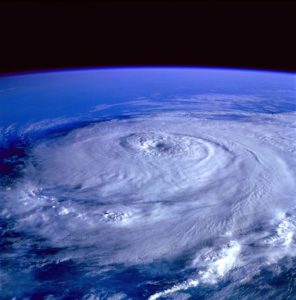 Bubbas Exotic Motorsports, located in south Florida and “ground zero” for many hurricanes, offers these Top 10 safety tips.
Bubbas Exotic Motorsports, located in south Florida and “ground zero” for many hurricanes, offers these Top 10 safety tips.
- Don’t Dive or Drive – NEVER drive into floods! Even if you think you know the road on which you are traveling from many years of use: DON’T DO IT! Less than a foot of water can render a vehicle inoperable. Once the vehicle is dead, the undercurrent of the swiftly moving water is enough to easily take control of the vehicle and sweep it away.
- Gas – Often there are fuel shortages before a storm.Make sure your vehicle is fueled up and keep a couple extra cans of gas or diesel on board. Never let your vehicle sit and idle in a puddle of water that reaches the exhaust system as it can allow concentrated deadly fumes to enter the passenger compartment.
- Park Safely -Park your vehicle in a well-covered area like a garage at home or a parking garage. NEVER park under trees or power lines for the obvious reasons!
- Waterproof Papers – Ensure all your documents like the registration, proof of insurance, etc. are sealed in a waterproof zip lock bag.
- Maintenance – Prior to the arrival of the storm, check to make sure all the fluid levels are good in your vehicle and most importantly your windshield wipers are clearing the windshield properly and not streaking because they are old and worn out.
- TPMS – Before the storm hits, make sure all tire pressures are set properly. This plays a big role in your vehicle tire ability to displace water from the tread patterns on wet roads and provides for optimal handling during these conditions.
- Stock Car – Ensure your vehicle is equipped with a FIRST AID kit and keep dry clothes in the trunk. Include some money in a waterproof zip lock bag and a spare cell phone charger.
- Tape Windows – If your vehicle is to be left outside, use duct tape and make a crisscross style pattern across all the windows to protect you if you are in the vehicle and the windows shatter.
- Photogenics -Take pictures of your vehicle before the storm so in the event any damage occurs you have proof for your insurance company.
- Safety First – Finally, STAY SAFE!!! If your gut tells you not to drive, DON’T! There is nothing worth risking your life or the lives of others. The storm will pass and you will soon be out and about again.
GEICO Suggests
Before the storm:
- Clean up – Pick up any objects that could become airborne during the high winds.
- Fill up your vehicle – Getting gas after a hurricane may present problems if the power is knocked out.
- Make a supply kit now – Include at least three days of food and water, medications, toiletries, cash, batteries and a radio. (Do not forget animal care supplies.)
- Have an evacuation plan – Identify a safe place, and discuss how you will communicate with your family if you are separated.
During Flods
- Evacuation Shelters – Know where evacuation shelters are located in your area.
- Follow the directions of local officials – They will provide important information in during such emergencies.
- Avoid driving through high water – If you don’t see the painted lines, don’t drive through. Getting your car stuck in high water is no joke. Six inches of moving water can knock you down, and a foot can sweep your vehicle away, according to Ready.gov.
Driving in Rain
- Reduce your speed – Slowing down reduces the chances of hydroplaning. If you hydroplane, immediately take your foot off the accelerator and do not apply the brakes abruptly or turn the steering wheel. A rotating tire has traction, while a sliding one does not.
- Turn on your headlamps – Simply turning on your headlamps makes you more visible to others.
- Maintain a safe distance – Increasing the distance between you and the vehicle ahead reduces the chance of a collision.